Instructional Series
This site will be closing soon as its content has moved to Tāhūrangi.
2024 titles are available on Tāhūrangi. Use the filters to find specific series.
Find Literacy resources at Tāhūrangi - Literacy.
Welcome to the English medium literacy instructional series teaching and learning resources for years 1 to 8.
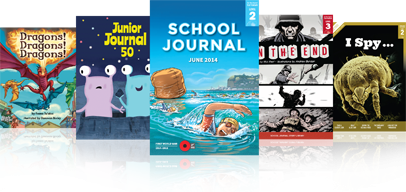
- Gold
- Green
- Purple
- Blue
- Turquoise
- 4
- 3
- 2
- 1
- 7
- 5
- 6
- 4
- 8
- 3
- 1
- English
- Social Sciences
- Science
- Health and Physical Education
- Technology
- The Arts
- Mathematics and Statistics
- Non-fiction
- Fiction
- None
- Nature of science
- Living world
- Planet Earth and beyond
- Material world
- Nature of technology
- Physical world
- Geometry and Measurement
- Statistics
- Technological knowledge
- Use evidence
- Engage with science
- Critique evidence
- Gather and interpret data
- Articles
- Stories
- Poems
- Plays
Search results
153 items - Showing 51 - 60
-
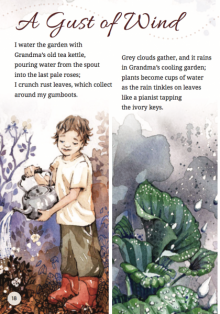
A Gust of Wind
by Sarah Penwarden
illustrated by Rachel Walker and Adam Pryor
In this four-stanza, illustrated poem, Sarah Penwarden uses rich imagery to describe the four seasons. The first-person narrator is a child, and the poem also reflects his or her relationship with grandparents.
-
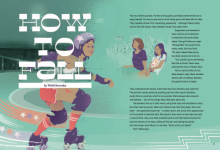
How to Fall
by Whiti Hereaka
illustrated by Rebecca ter Borg
"The rec centre’s packed. It’s like one big party, but Maia’s determined not to enjoy herself. Coming to see Aunty Emz’s derby game had been Mum’s idea. They needed a break from unpacking, apparently – although Maia’s pretty sure of the real reason: they needed a break from each other."
-
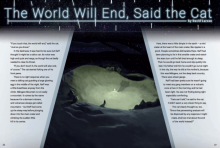
The World Will End, Said the Cat
by David Larsen
This is a fantasy story with a serious flavour. The indirect unfolding of the story allows students to make their own way through the text, piecing information together as they go.
-
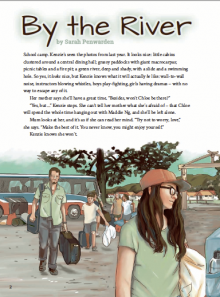
By the River
by Sarah Penwarden
"School camp. Kenzie’s seen the photos from last year. It looks nice: little cabins clustered around a central dining hall; grassy paddocks with giant macrocarpas; picnic tables and a fire pit; a green river, deep and shady, with a slide and a swimming hole."
-

Lost Treasure
by Anahera Gildea
"I’ve got this cousin Hoani. He always causes me big trouble. One time, I stayed over at his house and woke up paralysed. During the night, he’d plastic-wrapped me to the stretcher."
-
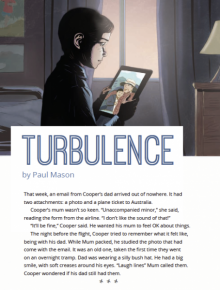
Turbulence
by Paul Mason
"That week, an email from Cooper’s dad arrived out of nowhere. It had two attachments: a photo and a plane ticket to Australia. Cooper’s mum wasn’t so keen."
-
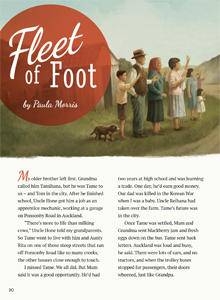
Fleet of Foot
by Paula Morris; illustrations by Andrew Burdan
The movement of Māori to the cities in the 1950s and 1960s was one of the most significant movements of people in our recent history. Paula Morris has used stories from her whānau as a basis for “Fleet of Foot”, a work of fiction that sits alongside “Kei Te Tāone Nui”, an article in the same journal that also explores the topic of Māori urbanisation. The text has links to the Aotearoa New Zealand’s histories curriculum.
-
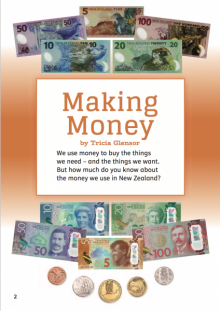
Making Money
by Tricia Glensor
This report is about New Zealand money, explaining where our money comes from and how and why the notes and coins have changed over time. It also describes the security features on the banknotes.
Gold 1
-
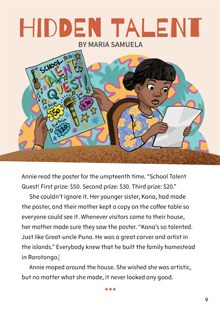
Hidden Talent
by Maria Samuela
Annie is feeling envious of her siblings – they each have a special talent. (Kana is artistic, Juanita can sing, and rugby-playing Jackson has been made props manager for the upcoming talent quest.) The family says their talents must be inherited from their ancestors. Annie doesn’t think she has any special talents. However, on the night of the talent quest, disaster looms when the power supply goes out.
-

Dodinga, 1858
by Paul Mason
illustrations by Gavin Mouldey
A historical narrative that is a companion story to the related article “Journeys of Discovery: The Life of Alfred Wallace” – this story provides some detail about the experiences the famous amateur naturalist Alfred Wallace had while travelling in far-flung places of the globe, hoping to crack the mysteries of evolution. Dodinga is the Indonesian village where Wallace was staying when he had his famous breakthrough in 1858. An author’s note describes the story’s links to actual events.







 Literacy Online home
Literacy Online home
